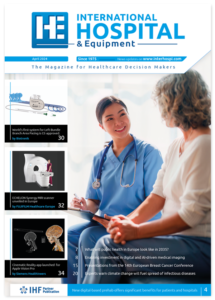Medical treatment may prevent, alleviate mitral valve damage after a heart attack
A research team led by investigators from Massachusetts General Hospital (MGH) and collaborators has shown, for the first time, that it may be possible to non-surgically treat or even prevent the damage to a major heart valve that often occurs after a heart attack. In their report the investigators – including co-senior authors at Boston Children’s Hospital and Brigham and Women’s Hospital – describe how treatment with the antihypertension drug losartan reduced mitral valve damage in an animal model of heart attack.
“Our study supports a new concept transforming how we think about heart valves,” says Robert Levine, MD, of the Heart Valve Program and the Cardiac Ultrasound Laboratory in the Corrigan Minehan Heart Center at MGH, co-senior author of the report. “They are not just passive tissue flaps, as previously thought, but are biological battlegrounds where medicines can be used to help patients. Patients with heart valve disease are currently treated with interventions – surgery or implanted devices – late in their illness when the heart is failing. We aim to prevent disease progression at an early stage and keep our patients’ hearts healthy.”
When blockage to a coronary artery causes the death of heart muscle, the body responds by sending immune cells and other inflammatory factors to the site of the damage. Co-lead author Jacob Dal-Bianco, MD, also of the MGH Heart Valve Program, explains, “A heart attack is like a fire in the heart; inflammation triggered by damage to the heart muscle attracts cells to clear up the damage and form a healed scar. The mitral valve can be caught up as an innocent bystander in this process and become inflamed and scarred, eventually becoming shorter, stiffer and less able to close effectively.”
Located between the left atrium, which receives oxygenated blood from the lungs, and the left ventricle, from which blood is pumped out to the body, a healthy mitral valve keeps blood flowing in the right direction. But if the valve tissues called leaflets don’t close properly after the heart beats, blood can leak back towards the lungs – a process called mitral valve regurgitation – reducing the efficiency of the heart and placing additional stress on the already-damaged organ. While it had been thought that post-heart-attack damage to the mitral valve was caused only by physical forces exerted by the scarring and stretching of damaged heart muscle, recent research by MGH team members found that the valve itself becomes thicker and stiffer, further reducing its ability to close.
Among the factors released by immune cells in an attempt to heal damaged heart muscle is transforming growth factor (TGF)-beta. While it is an important regulator of processes involved in growth, development and the immune response, excess levels of TGF-beta can overactivate other cells, leading to further scarring and stiffening of the mitral valve. Surgical repair of a damaged mitral valve fails within two years in 60 percent of patients, leading to shortness of breath and eventual heart failure.
The hypertension drug losartan is known to inhibit the effects of TGF-beta, and the current study was designed to see whether it could reduce post-heart-attack mitral valve damage in an animal model. For two months, daily doses of the drug were given to sheep in which a heart attack had been surgically induced. A control group of animals that did not receive the drug had surgical mesh sutured to their left ventricular walls to restrict the stretching that typically follows a heart attack and keep the size of the ventricle the same as in the drug-treated animals. At the end of the study period, significantly less inflammation, thickening and scarring had developed in the mitral valves of the losartan-treated animals, compared with the control group. Another study by the same group is investigating whether losartan treatment actually can reduce mitral valve regurgitation.
Massachusetts General Hospital
www.massgeneral.org/about/pressrelease.aspx?id=2141

